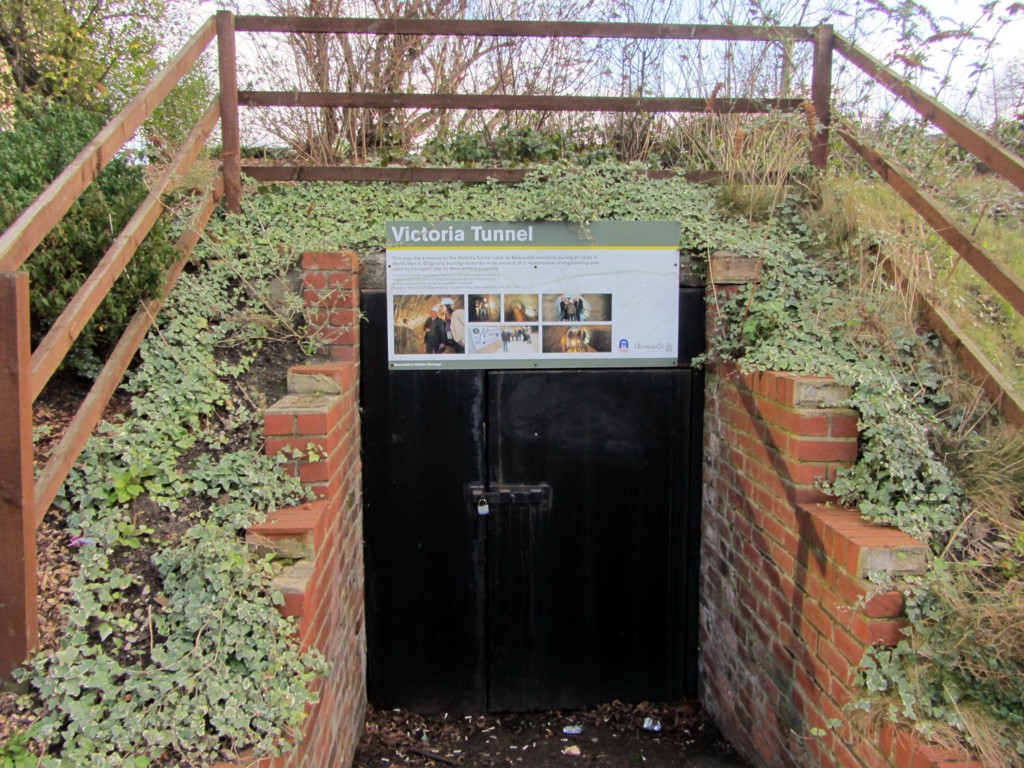A tunnel built in Victorian times to transport coal from Spittal Tongues Colliery to the River Tyne. Part of it was used as a bomb shelter in World War II.

Fun facts
- The Victoria Tunnel is a subterranean (a tunnel that runs under the earth’s surface) waggonway.
- The waggonway runs under Newcastle upon Tyne from the Town Moor to the River Tyne.
- The tunnel opened in 1842 to transport coal from Leazes Main Colliery in Spital Tongues Colliery (which was one of the largest coal mines in the Newcastle area) to jetties along Newcastle’s riverside for loading onto ships.
- Before the tunnel opened, coal was transported through the streets of Newcastle by horse and cart which was a long, slow and inefficient process.
- The tunnel operated between 1842 and the 1860s.
- A single railway track was used for wagons to carry coal.
- It was converted in 1939 to an air raid shelter for people to take cover during World War II.
- The full length of the tunnel measures 2.5 miles (4km).
- The deepest point that the tunnel goes underground is 85 feet (26m).
Then and now
Find more images of the Victoria Tunnel on the Co-Curate website.
Voices from the past
A young girl describes learning the terrible news that that her father has been killed in a mining disaster.
N.B. This audio clip is a work of fiction written and performed by a secondary school student. Although inspired by a real place in Newcastle and Gateshead, the characters and incidents which feature in it are either products of the student’s imagination or are used fictitiously. Dates and other information referred to in the clip may not be accurate.





